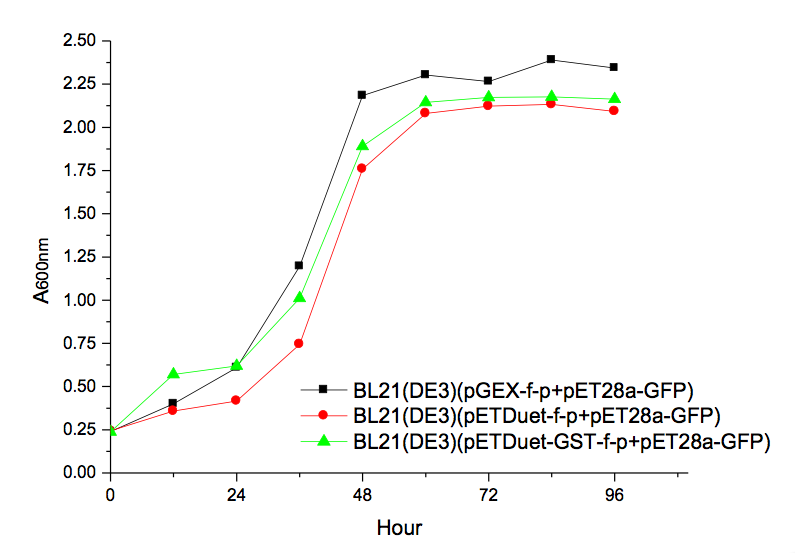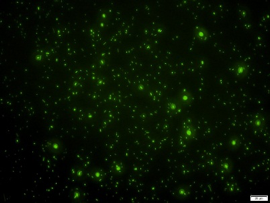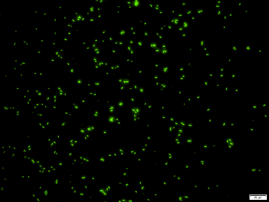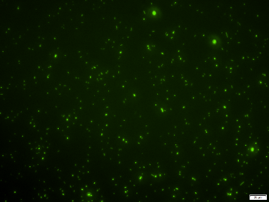Part:BBa_K2325103
An expression device for fusion protein of Formamidase and Phosphite dehydrogenase
The BBa_K2325001 harbors a coding sequence of and formamidase(FOR) and phosphite dehydrogenase (PTDH) with a linker between them, which can simultaneously catalyzes the conversion of formamide to ammonia and phosphite to phosphate, respectively. The device also contains GST tag for increasing the solubility of exogenous protein.
Sequence and Features
- 10COMPATIBLE WITH RFC[10]
- 12COMPATIBLE WITH RFC[12]
- 21COMPATIBLE WITH RFC[21]
- 23COMPATIBLE WITH RFC[23]
- 25INCOMPATIBLE WITH RFC[25]Illegal NgoMIV site found at 821
Illegal NgoMIV site found at 1308
Illegal NgoMIV site found at 1503
Illegal NgoMIV site found at 1650 - 1000INCOMPATIBLE WITH RFC[1000]Illegal SapI.rc site found at 159
Gel analysis
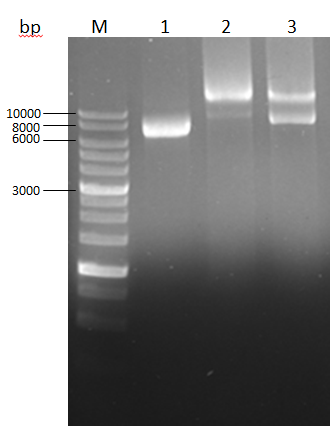
M:1kb DNA Marker P;
1: plasmid from BL21(DE3) (pGEX-for-ptx);
2&3: plasmid from BL21(DE3) (pETDuet-for-ptx).
Usage and Biology
We digested and ligated the pGEX-2T vector and fusion protein gene and then transformed it into E.coli strain BL21(DE3). We also constructed an co-expressed vector pETDuet-for-ptx where these two genes are expressed separately.
Figure 1: shows that the growth of recombinant strains of both construction ways are encouraging, indicating the recombinant strains were able to utilize formamide and phosphite at the same time, while the negative control group (BL21(DE3)) was unable to grow normally due to the lack of nitrogen and phosphorus sources.
We then transformed a GFP expressing plasmid into the recombinant strains with modified pathways.
Figure 2: shows similar growth trends of three strains in lag, logarithmic and stationary phases. However, after a 24-hour lag, OD value of samples with corresponding expression vectors showed slight differences. The one with expression vector of fusion protein showed the best growth level, followed by the co-expression vector with GST tag and the co-expression vector without GST tag, successively. All three kinds of strains reached the stationary phase after 48 hours when their OD value fell on about 2.1-2.4. The result indicated that the construction way of fusion protein helps to promote the metabolic functions of the recombinant bacteria, whereas GST label also facilitates the expression of genes of formamidase and phosphite dehydrogenase.
After 72 hours of cultivation and induction in MOPS medium, the observation of GFP fluorescence in all three samples indicated that the recombinant bacteria have the abilities to utilize formamide and phosphite for their own growth and multiplication, as well as express the GFP. The results revealed that the existing culture conditions, including medium composition, pH, osmotic pressure, redox potential, cofactors, and folding mechanisms, had satisfied the normal folding and synthesis of the GFP.
| None |


